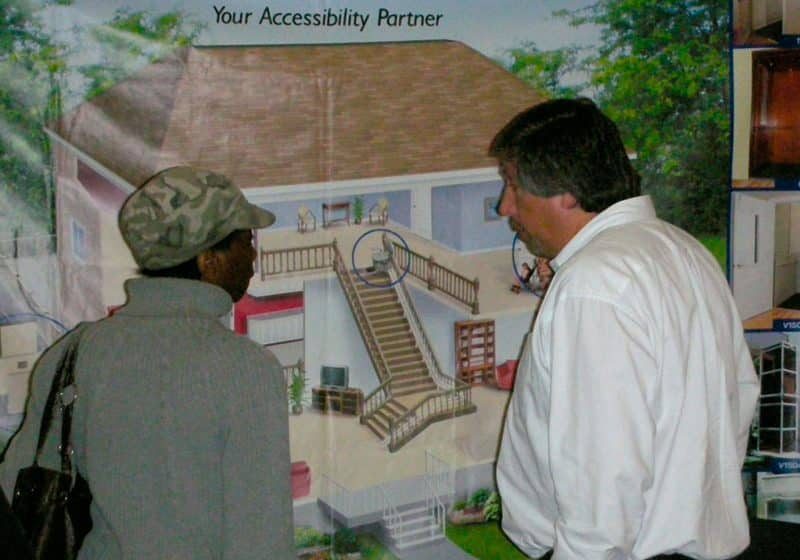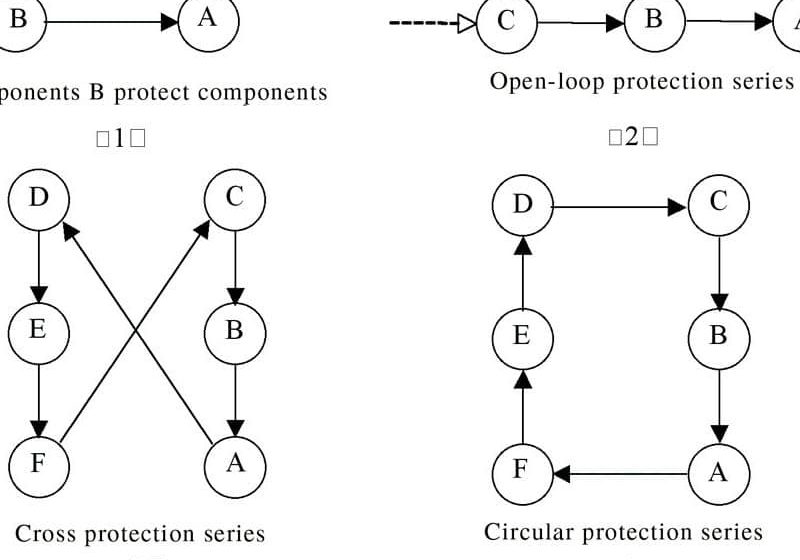How “Equal” Should Equal Tension Be When Fitting or Adjusting Elevator Hoist Ropes?
Jul 1, 2011
This paper looks at how accurately hoist ropes should be measured to achieve minimum wear and maximum life.
There is a difference of opinion between installers on how equal hoist rope tensions need to be in order to achieve the best performance. Some believe that an engineer’s thumb is a suitable tool for judging when equal tension has been achieved; others prefer to twang the rope like a bow string and compare the frequency of oscillations; others, again, choose to use a tool designed for the job. All these methods will achieve a result but not necessarily the optimum one that is required. So, how “equal” does hoist rope tension need to be? How accurately should it be measured for minimum wear and maximum life of rope and sheave during normal operation of the elevator?
A considerable amount of time and effort has gone into designing a scheme that is engineered to satisfy the demands of the elevators in a particular building: What sort of cars? What size? How many are needed? And, at what speed should they travel? The information is then given to sales engineers to determine the size of a car for the required load, the size and number of hoist ropes to support the suspended load and the machine to move the load at the required speed.
Anything that moves is subject to natural wear and tear. Minimizing the rate of wear and tear is of the utmost importance. Before a decision can be made on the degree of accuracy for the hoist rope tensions, it is important to understand how the traction system operates. The car is moved by the hoist ropes. Hoist ropes are placed in grooves on a traction sheave which grip them when the car has stopped, to prevent further movement. This grip also moves the car when the traction sheave is rotated.
To determine the speed of travel, the distance the car moves for each revolution of the traction sheave must be ascertained. In order to use the formula 2hr (the circumference of a circle) to work out the distance traveled per revolution of the traction sheave, we must first establish where “r,” the distance from the sheave axis is. When a rope is placed in a rope groove, one side of the rope is closer to the sheave axis than the other side of the rope so the rope center is used to determine “r.” Importantly, if ropes of different diameters were placed in adjacent rope grooves, they would travel different distances to each other when the sheave was rotated.
Consider what would happen if this situation occurred when hoisting the car and lowering the counterweight. Possibilities include:
- The rope with the largest diameter on the car side will travel further than the other ropes when hoisting, and ultimately take the entire car load.
- The other ropes on the car side will become slack when hoisting.
- The arc of contact with the traction sheave will be lost on these slack ropes, and traction on the ropes will be reduced.
- The rope with the smallest diameter on the other side of the traction sheave will retard the counterweight when lowering, and ultimately take the entire counterweight load.
- The other ropes on the counterweight side will become slack when lowering.
- The arc of contact with the traction sheave will be lost on the slack ropes, and so will available traction on those ropes.
- When sufficient traction has been lost, the tight ropes on the car side will slide back and the tight ropes on the counterweight side will slide forward until traction is regained.
- This sliding of the ropes, (which will not necessarily be at the same time as each other), will be similar to cutting through the traction sheave with a hacksaw blade. This will create excessive wear on the rope and sheave groove, where the rope is in contact with the traction sheave.
- The rope grooves will cease to be concentric and will become polygonal in shape along the sheave axis, and set up vibrations, etc., in the car as the traction sheave rotates.
- This situation is very dynamic and will continue to occur until new ropes are fitted and new grooves are re-cut in the traction sheave or until the sheave is replaced.
Fitting ropes of different diameters on the same traction sheave is asking for trouble, so all ropes must have the same diameter. Some rope suppliers will guarantee that a set of ropes will all be of the same specification and diameter along the complete length of the ropes, having the same rate of wear and stretch per unit length, etc. The sheave supplier will guarantee that the rope grooves are perfect in every way. Ropes do stretch when a load is applied to them, as we all know, and the rope will act just the same as a spring, within its elastic limits. Ropes do not only get longer as the load applied increases.
Consider the following:
- The length of rope is “L”
- The rope volume is “V” and is equal to “L” multiplied by area (“A”)
V = L x A
If figures are added to the calculation, it will become clear what happens to a rope when it stretches. The rope mass does not change.
Let us assume that the original rope “L” was 6, the A was 4 and the V was 24.
24 = 6 x 4
If the rope L is increased to 8 then
24 = 8 x 3
If the L is further increased to 12 then
24 = 12 x 2
It now becomes obvious that the rope area gets smaller as its length increases due to stretch. The area of the rope is hr2 and “h” is a constant value so “r” must have changed. The rope diameter is equal to 2r, so, as the rope length gets longer due to load, then its diameter will get smaller. It follows, therefore, that all ropes must have the same load (tension) applied to them to avoid excessive sheave and rope wear.
The next problem is determining how to achieve equal rope tension. One thing is certain – it cannot be achieved by using just one instrument. One may be able to get close, but will likely have to give up due to the length of time it takes. If it can be achieved using one gauge then why is there still a problem with rope tensions?
Gauges that were designed for load weighing are sometimes used for equalizing rope tensions. These gauges are unable to achieve the required accuracy needed. It is not necessary to know the weight of the suspended load when equalizing rope tensions, but the tensions must be equal regardless.
The suspended load is supported by all the hoist ropes, so adjusting any one rope will have an effect on all remaining ropes. Unless one can see what is happening to the rope being adjusted and the other ropes at the same time, then the required accuracy will not be possible to achieve.
When hoist ropes are installed, it is normal practice to leave the rope anchor bolts with maximum future adjustment available. This is necessary for rope shortening after permanent rope stretch and loss of overruns. It would not normally be possible to slacken a rope. In a situation like that, the tightest rope should not require adjustment. If the remaining ropes can be adjusted to have the same tension as the tightest rope, then all ropes will be equal. It is important to adjust both car and counterweight ropes before rotating the traction sheave for the first time.
Hoist ropes are manufactured by twisting steel wires into a strand and then twisting strands into a rope. When a hoist rope is subjected to a load it will attempt to untwist, which would immediately alter the rope tensions. If left to untwist, the end result would be a catastrophic failure of the rope. Preformed ropes or the rope anchor bolts tied together with hemp/nylon rope can be used to prevent untwisting of ropes. Wooden rope blocks, which are fitted to the ropes approximately 1 meter away from the hitch plate, are sometimes used on installations, but require a large overrun distance above both car and counterweight.
As the hoist ropes can only be adjusted one at a time, it is not necessary to use more than two rope-tension gauges to achieve accurate results. The two gauges must be identical in manufacture and produce the same readings for the same load. The Drucegrove Equator® rope-tension gauge has been specifically produced for this function.
This can be checked by placing both gauges on the same rope. An adjustment onsite may be required to ensure that they both show the same result. Do not adjust the gauges after calibration. The rope tension gauges do not need to measure the load in the hoist ropes, the tensions must all be the same regardless of the load. Changing the tension in a rope does not alter the weight of the suspended load; it only alters the tensions in the remaining ropes.
Using the tightest rope as a reference, place the second gauge on an adjacent rope and adjust this second rope to obtain the same gauge reading as on the reference rope gauge. The two ropes must now have the same tension. The second gauge can now be moved onto a third rope and that rope can be adjusted if needed. Any change in this rope tension will affect the first two ropes equally, so now three ropes will have equal tension. This process is repeated for all remaining ropes. When all ropes have been adjusted on one side of the traction sheave, the procedure must be repeated to adjust the ropes on the other side of the traction sheave. After both car and counter-weight ropes have been adjusted, it is advisable to move the car through the hoistway for one round trip and recheck the hoist rope tensions.
With 2:1 roping or greater, more than one round trip may be required. Once rope tensions are equal then it does not matter what load is placed in the car as all ropes will be supporting the same percentage of that load. The tensions will obviously increase with an increase in the load but will always be equal.
Now, consider the scenario where both car and counterweight ropes have equal tensions. Assuming that the car is empty and the suspended counterweight load is much greater than the suspended car load, the hoist ropes on the car side of the traction sheave will have a larger diameter than the hoist ropes on the counter-weight side of the traction sheave. When hoisting the car and the car ropes have passed over the top of the traction sheave, the change in rope load will cause the ropes to stretch and slide down the rope grooves.
This is known as “creep” and it is unavoidable. Creep is the cause of natural rope and sheave wear, and is the same around the entire periphery of the rope groove. It does not affect the ride quality. When lowering the empty car a similar situation occurs, this time the ropes will creep up the rope grooves. The amount of creep is totally dependant on the difference in load between the car and counterweight. There should be no creep under balanced load conditions. If there is evidence of creep under balanced load conditions, then there may be a serious problem with the available traction. Rope slip can occur if the acceleration, deceleration or braking is too severe, especially under empty car up or full load down movements.
Get more of Elevator World. Sign up for our free e-newsletter.









